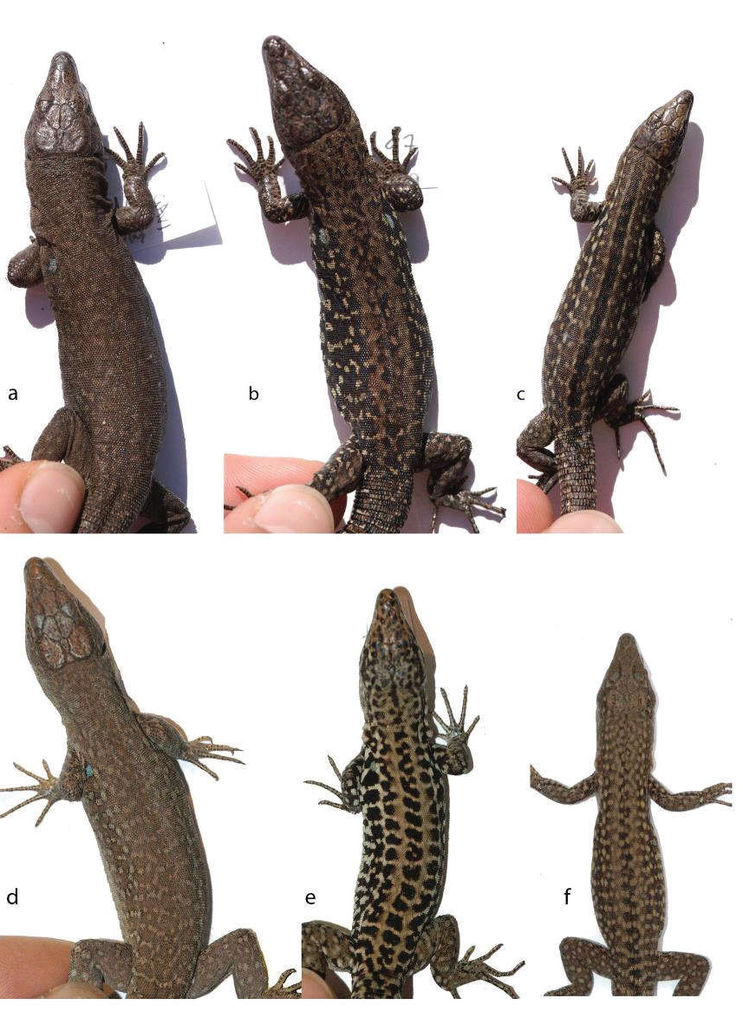
A New Lizard Discovered on the Pontine Islands
A new species of lizard that has been living undisturbed in the Pontine Islands for two million years has been identified by a research group headed by the Sapienza Department of Biology and Biotechnology in collaboration with researchers from the Florence “La Specola” Museum, the National Research Council, the Bonn Alexander Koenig Museum and the University of Potsdam.
The lizard, which has been named Lataste's Lizard (Podarcis latastei) was found in the westernmost isles of the Pontine Archipelago (Ponza, Gavi, Palmarola and Zannone), is characterised by a wide chromatic (including reticulated and uniform pattern and various shades of grey, green and brown). The discovery was made thanks to a series of publications that recently appeared on three scientific journals. These populations that were previously ascribed to the field lizard (Podarcis siculus), found throughout Italy, are genetically and morphologically so different that they should be included in a different species.
“In fact, phylogenetic analyses based on nuclear and mitochondrial DNA reveal that the current populations inhabiting the western Pontine Islands are the result of an ancient colonization, which occurred no less than two million years ago,” explains Riccardo Castiglia, Coordinator of the Project at the Department of Biology and Biotechnology. “Since then, the populations have remained isolated and it is incredible that they survived notwithstanding the significant fluctuations in sea levels that took place throughout the Pleistocene.”
Even the morphological analysis confirms the unique nature of the Lataste's Lizard that has a particular – although extremely variable – colour and head scales that are slightly different from the peninsular species.
Although currently abundant, its restricted distribution and exclusively on the islands makes it a species marked for conservation interest. In fact, the insular populations are subject to the effects of anthropic activity and their extinction has been documented on various islands of the Mediterranean, including the Pontine Islands. One example is the ancient and enigmatic field lizard from the Island of Santo Stefano, which was documented from the latter half of the 1800s, and then probably became extinguished in the nineteen-thirties. Therefore, it will be important to plan monitoring activities to evaluate the abundance of its presence and the status of this “new” Italian species.
References:
A study in scarlet: incipient speciation, phenotypic differentiation and conservation implications of the Podarcis lizards of the western Pontine Islands, Italy - Senczuk, G., Colangelo, P., Avramo, V., Castiglia, R., Böhme, W., & Corti, C. - Biological Journal of the Linnean Society, (125, 2018), 50-60
Spotlight on islands: on the origin and diversification of an ancient lineage of the Italian wall lizard Podarcis siculus in the western Pontine Islands - Senczuk, G., Havenstein, K., Milana, V., Ripa, C., De Simone, E., Tiedemann, R., & Castiglia, R. - Scientific reports, (8, 2018)
Podarcis siculus latastei (Bedriaga, 1879) of the western Pontine islands (Italy) raised to the species rank, and a brief taxonomic overview of Podarcis lizards - Senczuk, G., Castiglia, R., Böhme, W. & Corti,C. - Acta Herpetol (2019)
Further Information
Riccardo Castiglia - riccardo.castiglia@uniroma1.it
“Charles Darwin” Department of Biology and Biotechnology






